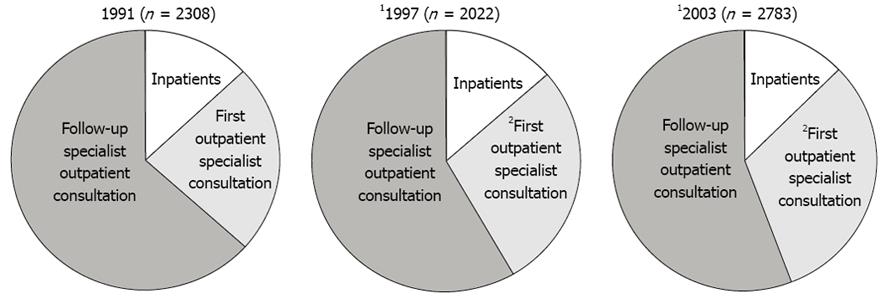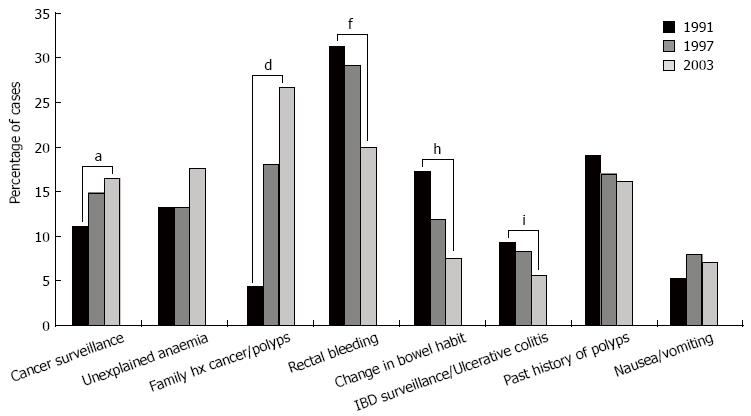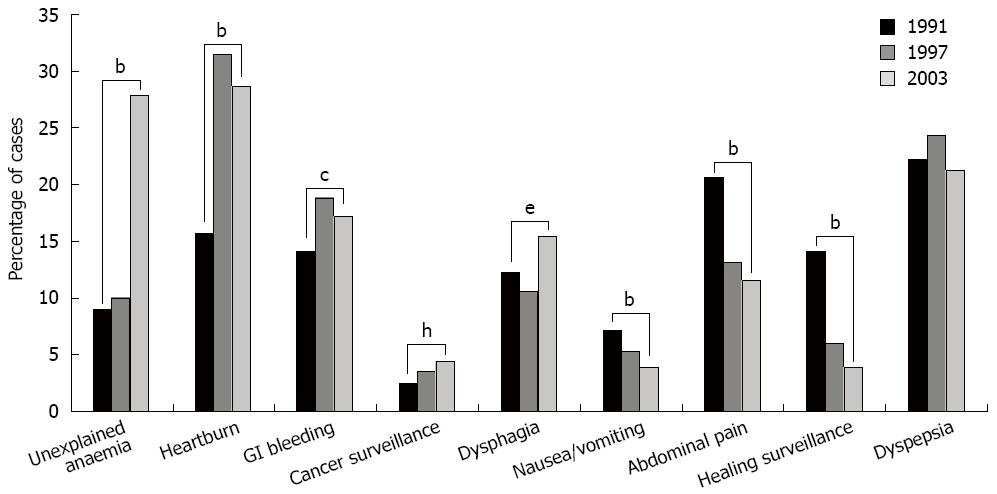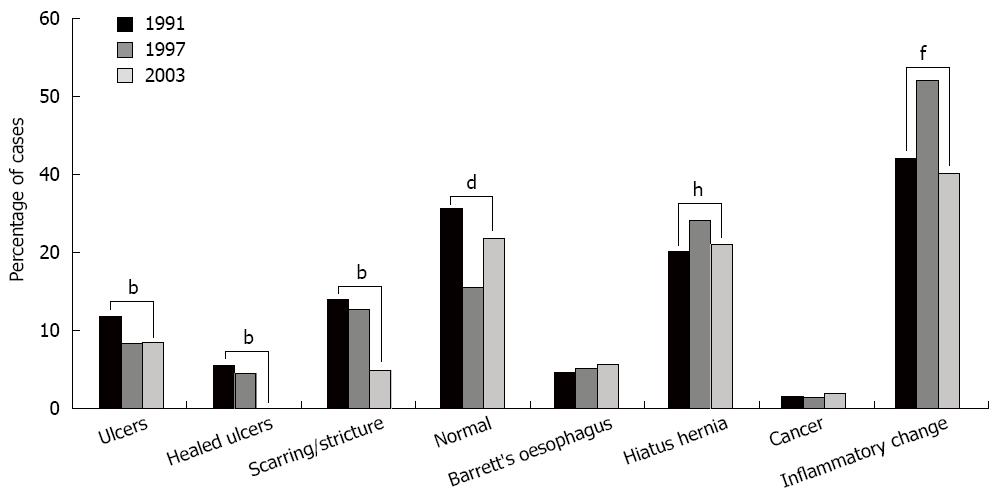Copyright
©2009 The WJG Press and Baishideng.
World J Gastroenterol. Feb 7, 2009; 15(5): 583-590
Published online Feb 7, 2009. doi: 10.3748/wjg.15.583
Published online Feb 7, 2009. doi: 10.3748/wjg.15.583
Figure 1 Total numbers of patients seen as in- and outpatients.
There is a significant increase in the total number of patients (1C-A P < 0.0001) and in the number of new patients seen (2C-A P < 0.0001). The number of follow-up patients and inpatients remained statistically unchanged.
Figure 2 Indications for colonoscopies over the three years studied.
There was a significant increase in colonoscopies in patients with a past medical history of colorectal cancer (aP = 0.015) and in patients with a positive family history of colorectal cancer and/or polyps (dP < 0.001). But there was a significant decrease in colonoscopies for rectal bleeding (fP < 0.001), change in bowel habit (hP < 0.001), and IBD surveillance (iP < 0.019).
Figure 3 Colonoscopic findings.
Over the 13 years studied, significant increases in cancer (aP = 0.008) and diverticulae (bP < 0.001) were seen. In contrast, findings of inflammatory bowel disease decreased (fP < 0.001).
Figure 4 Indications for gastroscopies over the three years studied.
There was a significant increase in gastroscopies performed for unexplained anaemia and heartburn (bP < 0.001), as well as for suspected upper gastrointestinal bleeding (cP < 0.034), dysphagia (eP = 0.014) and cancer surveillance (hP = 0.01).
Figure 5 Gastroscopic findings.
The number of ulcers, healed ulcers and scarring/strictures (bP < 0.001) for all) and the proportion of normal findings (dP = 0.006) decreased significantly over the years. Findings of inflammatory changes and hiatus hernia fluctuated significantly across the years (chi-squared fP < 0.001 and hP < 0.005, respectively) (fP = 0.148 and hP = 0.478, respectively).
- Citation: Schultz M, Davidson A, Donald S, Targonska B, Turnbull A, Weggery S, Livingstone V, Dockerty JD. Gastroenterology service in a teaching hospital in rural New Zealand, 1991-2003. World J Gastroenterol 2009; 15(5): 583-590
- URL: https://www.wjgnet.com/1007-9327/full/v15/i5/583.htm
- DOI: https://dx.doi.org/10.3748/wjg.15.583













